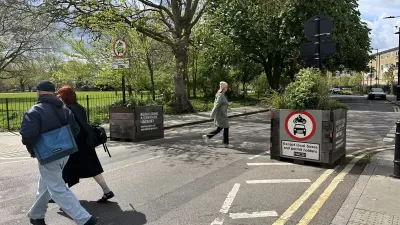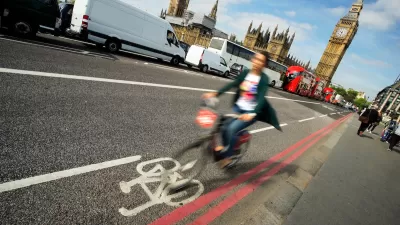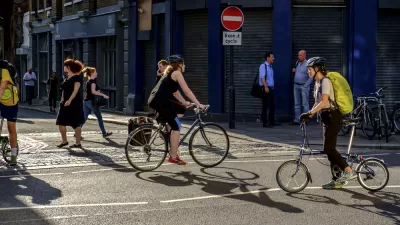According to Chris Peck, “Better cycling infrastructure, an enforced road traffic law and a reduction in the space available to motor traffic are all required to get cycling growing again in London.”
"The mayor of London's 'cycling Revolution', launched in 2010, was revolutionary in name only,” writes Chris Peck, policy coordinator of the UK's national cyclists' organization, the Cyclists' Touring Club (CTC). A bit of a mixed bag, London's citywide cycling campaign has seen its share of successes and failures. Accomplishments include the implementation of a bicycle borrowing system, the creation of cycling superhighways, and ushering in a 10-15% increase in cycling levels. But, all this development has been costly for London at about £10 per head, and several high-profile deaths and what many feel is poorly design cycling infrastructure and regulation have been accompanied by a recent decline in cycling levels.
Since 2007, “both nationally and in London, cycle casualties have been increasing faster than the rate of cycling, undermining the idea that if you get more people cycling, it will inevitably become safer,” writes Peck. In fact, he asserts that in London, unlike in cities such as Copenhagen and Amsterdam, the “safety in numbers” idea has failed to materialize. This is due to a variety of factors related to both infrastructure and policing, as well as road user behavior. "The problem with so much existing cycle infrastructure is that it does little to improve safety, but also undermines the status of cycling, relegating them to a narrow, unhelpful cycle lane the users of which must give way to all other road users," writes Peck.
FULL STORY: Why is there no safety in numbers for London's cyclists?

Planetizen Federal Action Tracker
A weekly monitor of how Trump’s orders and actions are impacting planners and planning in America.

Maui's Vacation Rental Debate Turns Ugly
Verbal attacks, misinformation campaigns and fistfights plague a high-stakes debate to convert thousands of vacation rentals into long-term housing.

Cuomo Is the Candidate of Both NIMBYs and Developers. What Gives?
In the New York City mayoral race, odd bedfellows align to preserve the housing status quo.

The Subversive Car-Free Guide to Trump's Great American Road Trip
Car-free ways to access Chicagoland’s best tourist attractions.

San Antonio and Austin are Fusing Into one Massive Megaregion
The region spanning the two central Texas cities is growing fast, posing challenges for local infrastructure and water supplies.

Charlottesville Temporarily Has No Zoning Code
A judge ordered the Virginia city to throw out its newly revised zoning code, leaving permitting for new development in legal limbo.
Urban Design for Planners 1: Software Tools
This six-course series explores essential urban design concepts using open source software and equips planners with the tools they need to participate fully in the urban design process.
Planning for Universal Design
Learn the tools for implementing Universal Design in planning regulations.
Heyer Gruel & Associates PA
JM Goldson LLC
Custer County Colorado
City of Camden Redevelopment Agency
City of Astoria
Transportation Research & Education Center (TREC) at Portland State University
Jefferson Parish Government
Camden Redevelopment Agency
City of Claremont





























